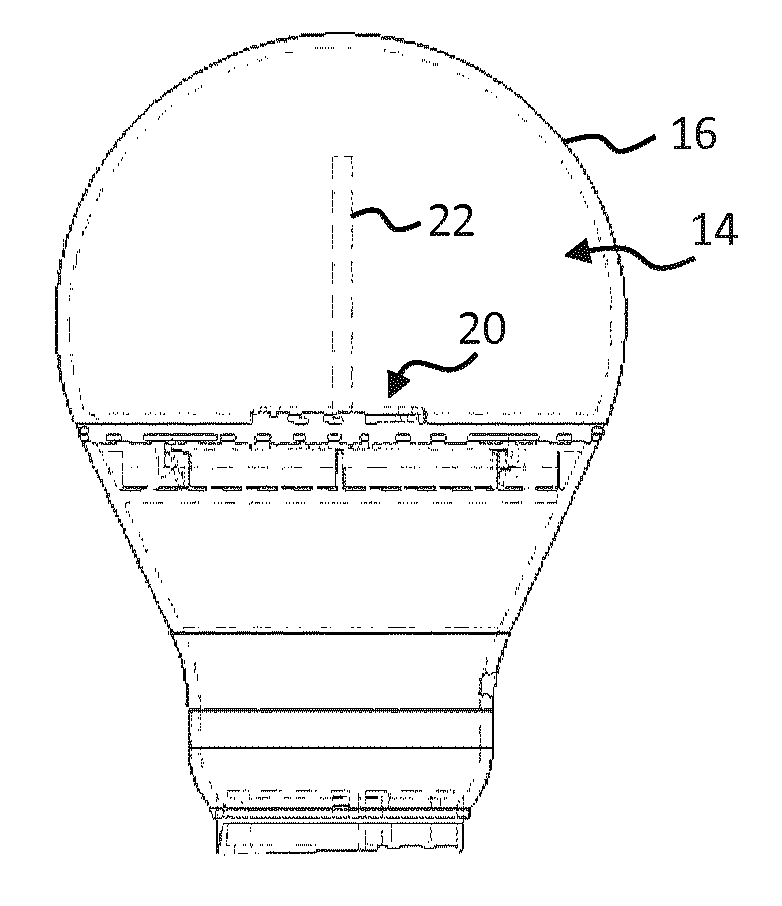Lighting device with wireless control element
a wireless control and lighting device technology, applied in the field of lighting devices, can solve the problems that the orientation may not meet certain desired specifications for the directivity of the antenna, and achieve the effects of improving the sensitivity or wireless range of the device, facilitating wireless control of the lighting device, and facilitating interfacing
- Summary
- Abstract
- Description
- Claims
- Application Information
AI Technical Summary
Benefits of technology
Problems solved by technology
Method used
Image
Examples
Embodiment Construction
[0066]It should be understood that the Figures are merely schematic and are not drawn to scale. It should also be understood that the same reference numerals are used throughout the Figures to indicate the same or similar parts.
[0067]FIG. 1 schematically depicts a lighting device according to an embodiment. The lighting device comprises a first, upper module 8, the upper module comprising a light exit chamber 14 delimited by a curved light exit window 16, and a second, lower module 10, the second module mated with the first module to define the lighting device. Positioned within the light exit chamber are a plurality of light sources 20, the light sources mounted to a surface at the base of the chamber, and a translucent antenna element 22, the antenna element extending perpendicularly from said surface at the base of the chamber. Preferably the translucent antenna is as transparent as possible, in particular having a transmittance which is greater than or equal to 80%. The light so...
PUM
 Login to View More
Login to View More Abstract
Description
Claims
Application Information
 Login to View More
Login to View More - R&D
- Intellectual Property
- Life Sciences
- Materials
- Tech Scout
- Unparalleled Data Quality
- Higher Quality Content
- 60% Fewer Hallucinations
Browse by: Latest US Patents, China's latest patents, Technical Efficacy Thesaurus, Application Domain, Technology Topic, Popular Technical Reports.
© 2025 PatSnap. All rights reserved.Legal|Privacy policy|Modern Slavery Act Transparency Statement|Sitemap|About US| Contact US: help@patsnap.com



